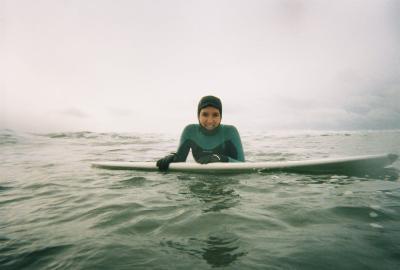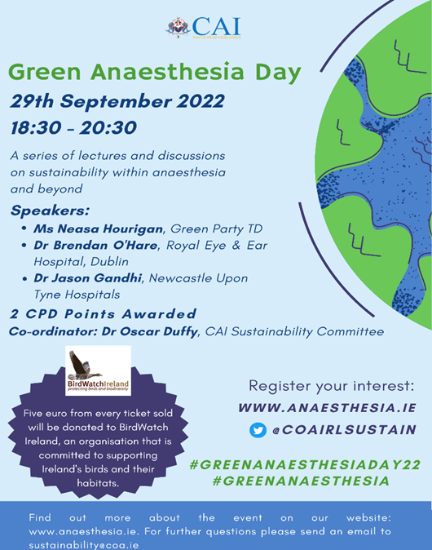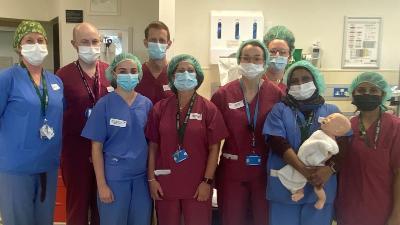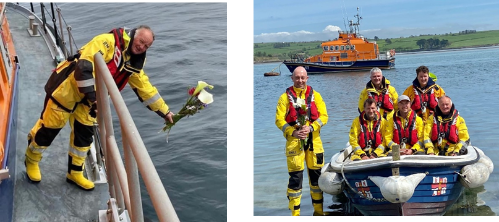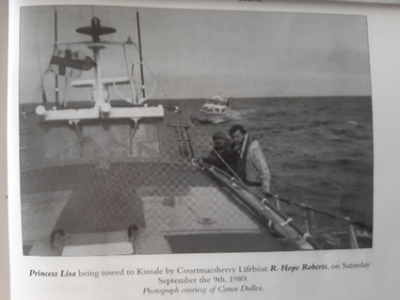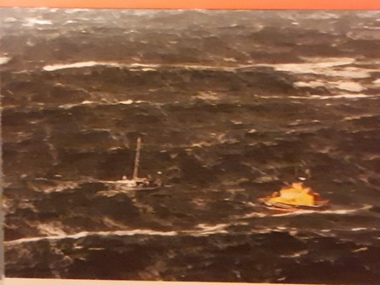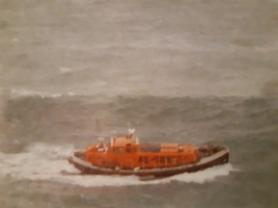UCC Anaesthesiology Newsletter - August/September
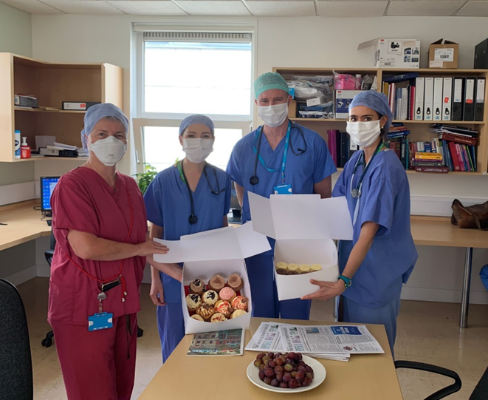
Welcome:
|
|
|---|
Dr Clare Keaveney Jimenez, SpR, CUH
Hello everyone, welcome to the first UCC Anaesthesiology Newsletter of this rotation.
Welcome in particular to those across all UCC-affiliated Anaesthesiology Departments who are joining anaesthesia for the first time. I hope you are enjoying the specialty. We are a large community and there will always be a colleague to discuss things over a coffee, so never hesitate to reach out.
We are grateful to our Consultant and NCHD colleagues who organise and contribute to educational programs across all training sites. The rotation has begun in the Cork University Hospital (CUH) with departmental teaching in anaesthesia, obstetric anaesthesia, ICU and pain, as well as exam tutorials and journal club up and running. In the Mercy University Hospital (MUH), anaesthesia and ICU teaching has recommenced on a weekly basis. In-situ simulation sessions in theatre and ICU which were established last Spring are continuing on a fortnightly basis. In the South Infirmary Victoria University Hospital (SIVUH), weekly NCHD tutorials with a particular focus on airway and tracheostomy topics, along with fortnightly journal clubs have recommenced this term.
We thank Dr. Oscar Duffy, Sustainability Committee, College of Anaesthesiologists of Ireland (CAI), for highlighting the upcoming CAI Green Anaesthesia Day virtual conference to be held on 29th September from 18:30 to 20:30. Green Anaesthesia Week last year was a thought-provoking and influential week, no doubt this year’s virtual event will inspire further impetus for improvement.
We also feature an interview with Mr Conor Dullea, RNLI volunteer crewperson, the first of our First Responder series. We hope to gain insight into the training and challenges faced by the people who often form the first contact in the treatment of people experiencing a medical emergency.
If anyone would like to contribute to future newsletters please send us an email to yesuccanews@gmail.com, we are always happy to hear from Departments of Anaesthesiology across all UCC sites and beyond.
I am looking forward to meeting you all and working together throughout the year,
Clare
Green Anaesthesia Day: 29-09-2022
|
|
|---|
Dr. Oscar Duffy, Sustainability Committee, College of Anaesthesiologists of Ireland
The sustainability committee of the College of Anaesthesiologists of Ireland is hosting a virtual sustainability event on September 29th of this year. Joining us that evening are three exciting speakers all of whom have recently taken on significant challenges:
- Dr Brendan O'Hare - consultant anaesthesiologist in the Royal Victoria Eye and Ear Hospital Dublin - who will inform us of his journey to decommissioning N2O use in the RVEEH as well as his approaches to paediatric anaesthesia without nitrous oxide.
- Neasa Hourigan - Green Party TD - who has worked on recycling and air quality improvement initiatives in Ireland.
- Dr Jason Gandhi – Association of Anaesthetists sustainable anaesthesia fellow at Newcastle Trust in England will speak about the challenges and opportunities of moving away from single use anaesthetic equipment.
This event follows on from efforts by the College of Anaesthesiologists of Ireland Sustainability Committee over the past two years to reduce the environmental impact of anaesthesia in Ireland. Our important work to date has involved quantifying and reducing national CO2 equivalent emissions relating to anaesthetic gases and working to reduce N2O leaks from pipes in hospitals in Ireland.
In addition, the College of Anaesthesiologists of Ireland has partnered with Birdwatch Ireland for this event and five euro from every entry fee purchased will be donated to this important organisation who are protecting Irish birds and their habitats.
We hope you will join us for what will be an interesting evening with a possible sprinkling of controversy on the importance of environmental initiatives in anaesthesia and wider society.
Departmental updates:
CAI Officers:
Dr Brian O’Brien, Consultant Anaesthesiologist, CUH, was elected Vice President of the College of Anaesthesiologists of Ireland.
The new Chairperson for the Training Committee is Dr Patrick Seigne, Consultant Anaesthesiologist, CUH.
Dr Owen O’Sullivan, Consultant Anaesthesiologist, MUH, has commenced a new role as Director of Technology Enhanced Learning at the CAI.
We thank these clinicians for taking on these important roles and wish them well.
Clinical Professor, UCC:
We congratulate Professor Dorothy Breen, Consultant Anaesthesthesiologist, CUH on her recent appointment as Clinical Professor to UCC.
Fellowships CUH:
The CUH Anaesthetic Department welcomes Dr Michelle Auth from Germany, a ESAIC grant recipient who commences a 3 month visiting fellowship to focus on PNB, Cardiothoracic anaesthesia and ICU medicine.
We also welcome Dr Catarina Almeida from Portugal who has commenced a two-month PNB fellowship.
Practical Obstetric Multi-Professional (PROMPT) Training:
|
|
|---|
On the 16th September, another successful Practical Obstetric Multi-Professional Training (PROMPT) course was held at the CUMH. Prior to the course, candidates accessed on-line lectures covering important topics such as maternal collapse, sepsis and anaesthetic emergencies. On the day of the course, candidates rotated through workshops which are designed to develop a teamwork approach to the management of obstetric emergencies.
The faculty of the Maternal Collapse and Anaesthetic Emergencies workshop included Ms Mary Prince (CNM 2), Dr Damien Barry (Consultant Anaesthesiologist) and Dr Eoin O’Rathallaigh (Senior Clinical Fellow in Trauma Anaesthesia, St. Mary’s Hospital, London). Eoin travelled specially from London to facilitate on the PROMPT course.
The PROMPT courses have been shown to significantly improve outcomes for mothers and babies. They also allow for midwives, obstetricians and anaesthesiologists to meet in a non-clinical environment to share knowledge, to promote teamwork and to have a chat over coffee.
Well done all!
Wellbeing:
The Coffee and a Gas Program:
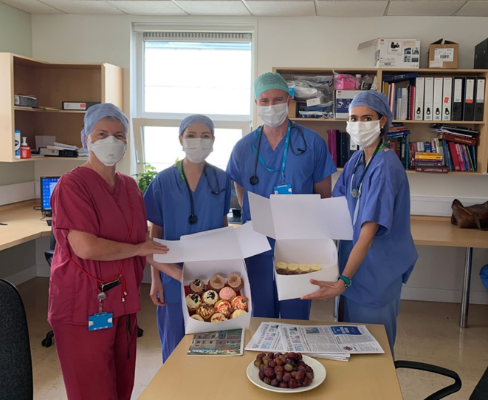 |
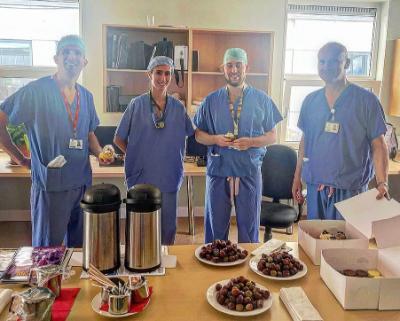 |
|---|
Dr Sinéad McKenna, SHO, CUH
The Department of Anesthesiology and Critical Care, CUH, held its first “Coffee and a Gas” meeting of the academic year on August 3rd, to warmly welcome CUH’s newest cohort of Anaesthesia trainees to the Department.
“Coffee and a Gas” is an initiative led by consultants Dr Oonagh Hickey and Dr Niamh McAuliffe, inspired by the AAGBI initiative of the same name, which aims to promote teamwork and wellbeing in the workplace.
The coffee morning provided an excellent opportunity for NCHDs and consultants from across the hospital to meet and talk with each other in a relaxed environment. For many (particularly the beginners!) it was an opportunity to meet other trainees and consultants for the first time. For others, it provided a chance to catch up outside of the busy theatre and ICU environment.
Beautiful cupcakes and mini cheesecakes (Dr. Plant’s favourite) were provided by The Cupcake Cottage, while Dr. Parvaiz Hafeez kindly brought in delicious home-grown plums from his Garden for the event (Anaesthetists are multi-talented as we all know!)
We very much look forward to the next “Coffee and a Gas” catchup.
CAI Wellness breakfast seminar:
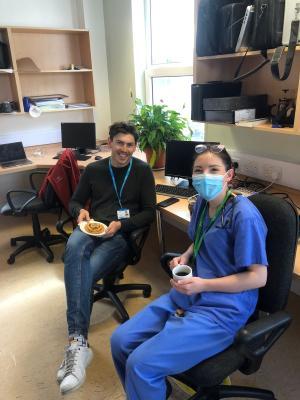 |
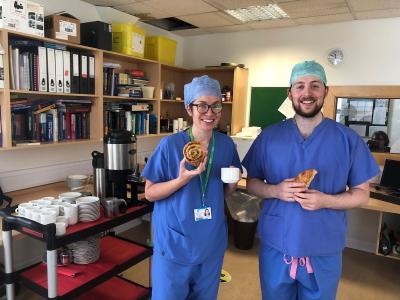 |
|---|
On the 8th September, the College of Anaesthesiologists of Ireland (CAI) hosted a Wellness Breakfast Webinar. The CUH Department of Anaesthesia held a special Coffee and Gas at 10:30 to facilitate discussion on the learning points raised by the Webinar and to have a chat over coffee and Danish pastries.
The First Responders Series:
The volunteer RNLI lifeboat crew
|
|
|---|
Dr Oonagh Hickey, Consultant Anaesthetist, CUH.
First two photos: credit RNLI Harbour Lifeboat, Courtmacsherry
We start our “First Responder Series” with an interview with Mr Conor Dullea, who recently received a 30 year Long Service award as volunteer crewmember of the Courtmacsherry Harbour RNLI Lifeboat. Conor works as a builder and in maintenance.
The Royal National Lifeboat Institution (RNLI) was established in 1824 with the aim of preserving life at sea. It operates 444 lifeboats around the British and Irish coasts, manned mostly by local volunteers. The RNLI Courtmacsherry Harbour RNLI Lifeboat station was founded in 1825, one of the first in Ireland. The crew have been presented with 14 awards for gallantry.
In 1915 the local volunteer crew rowed for over three hours to assist when the Lusitania Liner was struck by a torpedo fired by a German submarine 12 miles off the Seven Heads, with the loss of 1,197 lives. On each anniversary, the Courtmacsherry Lifeboat travels to the site of the wreck and this year the wreath was laid by volunteer crewperson Mr Conor Dullea (first photo).
The Courtmacsherry Lifeboat was also involved in the rescue efforts during the 1979 Fastnett Race Disaster, when the annual yacht race was caught in a force 11 gale off the south coast of Ireland with the loss of 18 lives. The rescue efforts included some 4,000 personnel from Lifeboats Services, Navy, Air Forces and Coastguards from Ireland, the UK, France and the Netherlands, as well as fishing and merchant vessels. I was on a family holiday at the Courtmacsherry Caravan Park at the time, which we quickly abandoned as the storm hit. My father, Dr Matt Hickey (Consultant Neuroradiologist, CUH, and boat enthusiast), volunteered for the reserve lifeboat crew at the time. He had the subsequent honour of serving as Honorary Medical Officer with the Courtmacsherry Lifeboat for almost 20 years. I once had the honour of jumping off the lifeboat to test the new self-inflating lifejackets.
The arrival of the lifeboat crew is often a very welcome sight for those in difficulty and they are often the first responders to medical emergencies. Some of these casualties subsequently find themselves under our medical care. It is worth noting that many rescues in recent times are of people who had not intended entering the water, including people trapped by incoming tides and falls from cliffs. We are very grateful to the lifeboat crews who make themselves available, often in very challenging conditions, to assist others.
Conor, thank you for talking to us about your experiences as a lifeboat volunteer over the last 30 years. Why did you join the crew of the Courtmacsherry Harbour Lifeboat?
I’m Red Cross trained since 1985 and drove a Red Cross ambulance for 25 years. I was on a tour around the harbour in the lifeboat during the Courtmacsherry Regatta when Diarmuid O’Mahoney, the Cox, invited me to join the lifeboat crew.
What have been the most notable rescues that you have been involved in?
My first outing as a lifeboat crew member was in 1989 when the lifeboat was in attendance at the Kinsale Disabled Sailors Championship. We took in a sailor who went overboard. He was injured and was hypothermic. We warmed him up as we took him back to the pier. He asked if he could smoke a cigarette and the Medical Officer gave the go ahead. We reckoned that it might have helped to warm him up. We went straight back out again to tow in a cabin cruiser, “The Princess Lisa”, which had engine trouble (photo of “The Princess Lisa” being towed by the Lifeboat, taken by Conor Dullea- Matt Hickey (my Dad) in the woolly hat).
|
|
|---|
I’ve bandaged two casualties with severed fingers. One was a Polish Sailor whom we took onto the lifeboat 14 miles off Galley Head with his finger in a bag of ice which had melted. His hand was wrapped in an oily towel so I cleaned and bandaged it before he was winched off by the coastguard helicopter. He had landed in Cork Airport before we had returned to Courtmacsherry Harbour. The finger wasn’t viable enough to be reattached but he did well otherwise.
Another time, we took on board a Dutch fisherman with a badly severed finger and his wife, who translated for us. I gave him Entonox to use while I was bandaging his finger. This was our first time using Entonox and I was quickly alerted that his wife had just lit a cigarette behind me. She was quickly asked to put it out. I put a non-adherent dressing on the hand and put the arm in a sling. He was taken by ambulance to the CUH and the finger was successfully reattached. Apparently, my bandaging was complimented in the CUH.
We were called to a fishing vessel off the Old Head of Kinsale because a man had been hit above his eye by a shackle which had broken free from the towing frame used for pulling in the nets. He was conscious but concussed. We gave him oxygen and I bandaged the wound. He lost some of the sight in his eye but otherwise made a good recovery.
I remember one winter’s night we were called out to a herring boat in Courtmacsherry Bay to retrieve a man with a chest injury. I went on board the vessel but didn’t realise how slippery the deck was from the fish oil and I nearly fell. The gentleman was transferred to the lifeboat on a stretcher and taken by ambulance from Courtmacsherry pier to the CUH. He made a good recovery from his rib fractures.
One Sunday morning, my pager went off while I was at Mass. There was a Force 9 gale and a lone sailor was in difficulty 20 miles off the Old Head of Kinsale. He had been at sea for 15 days and had sailed from the Bay of Biscay. His radio wasn’t working but he had a hand held VHF radio. He sent out a Pan Pan call which was picked up by the French trawler “Plouton” who relayed it to the Valencia Coastguard. The Coastguard helicopter located the yacht which was drifting but were unable to winch because of the weather conditions. They relayed his position to us. The sea was breaking over both vessels, but we used a heaving line and a lifejacket to transfer the injured man onto the lifeboat. We attached a tow rope to the yacht, but it broke. A fishing trawler picked it up the following day. The sailor wrote a book about his voyage, including our rescue. The rescue was also featured on the 2004 RNLI calendar. The photo of the rescue was taken from the coastguard helicopter
|
|
|---|
How often are you called out? What are the most common call outs?
We usually get about 17 calls a year, but we’ve had 21 this year already. Calls could be for vessels with engine trouble, yachts adrift, injuries, as well as windsurfers, kayakers and swimmers in trouble. The number of swimmers getting into difficulty has definitely gone up recently.
What medical training do you get? What can you provide on board the lifeboat?
Every 5 years or so, the RNLI runs a week-long course in first aid and personal safety. On board there are medical supplies including oxygen and Entonox, drinking water, tea, coffee, packet soup, biscuits and chocolate bars.
After each call out, what is the procedure?
The lifeboat is refuelled and restocked and made ready for action again.
How does being called interfere with your working life?
I’m self employed and I’m used to it.
Can you describe the training that the crew undertake?
We have a weekly training exercise. Crew members are expected to attend at least one a month. There is a meeting before the exercise so that everyone is clear as to what the training exercise will involve. We also have multi-agency training. We had a recent public combined training exercise at Broad Strand involving the Old Head and Seven Heads coastguard, the coastguard helicopter, and the navy.
Are there any weather conditions that the lifeboat would not launch?
Our current lifeboat is the “Frederick Storey Cockburn”, a Trent class lifeboat. It’s an all weather lifeboat service and we would launch in all weather conditions. We have a range of 50 miles but we have gone beyond that.
You must have call-outs where the outcome is not as you’d wish. How do you do handle that?
We were called to retrieve one of our own community who had accidentally drowned in the harbour trying to board his boat at night. That was difficult for everyone but you just have to get on with it.
Do you enjoy your involvement with the lifeboat?
I do.
Thank you very much for your service and for taking the time to talk to us.
Final photo: the Courtmacsherry Lifeboat, the Solent Class R. Hope Roberts (1987-93), taken by Conor Dullea from the Old Head of Kinsale Lighthouse. Note the large swell. It was nicknamed “The Yellow Submarine” because it tended to cut through waves rather than go over them. I can confirm that, having been on it in a heavy swell.
|
|
|---|
You can follow the “Courtmacsherry Harbour Lifeboat” Facebook page. The RNLI is funded by public donations. Donations may be made on the RNLI webpage.
RNLI - Royal National Lifeboat Institution - Saving Lives at Sea
Courtmacsherry RNLI - Home (courtmacsherrylifeboat.org)
Editors:
Dr Clare Keaveney Jimenez, SpR, CUH.
Dr Oonagh Hickey, Consultant Anaesthesiologist, CUH

